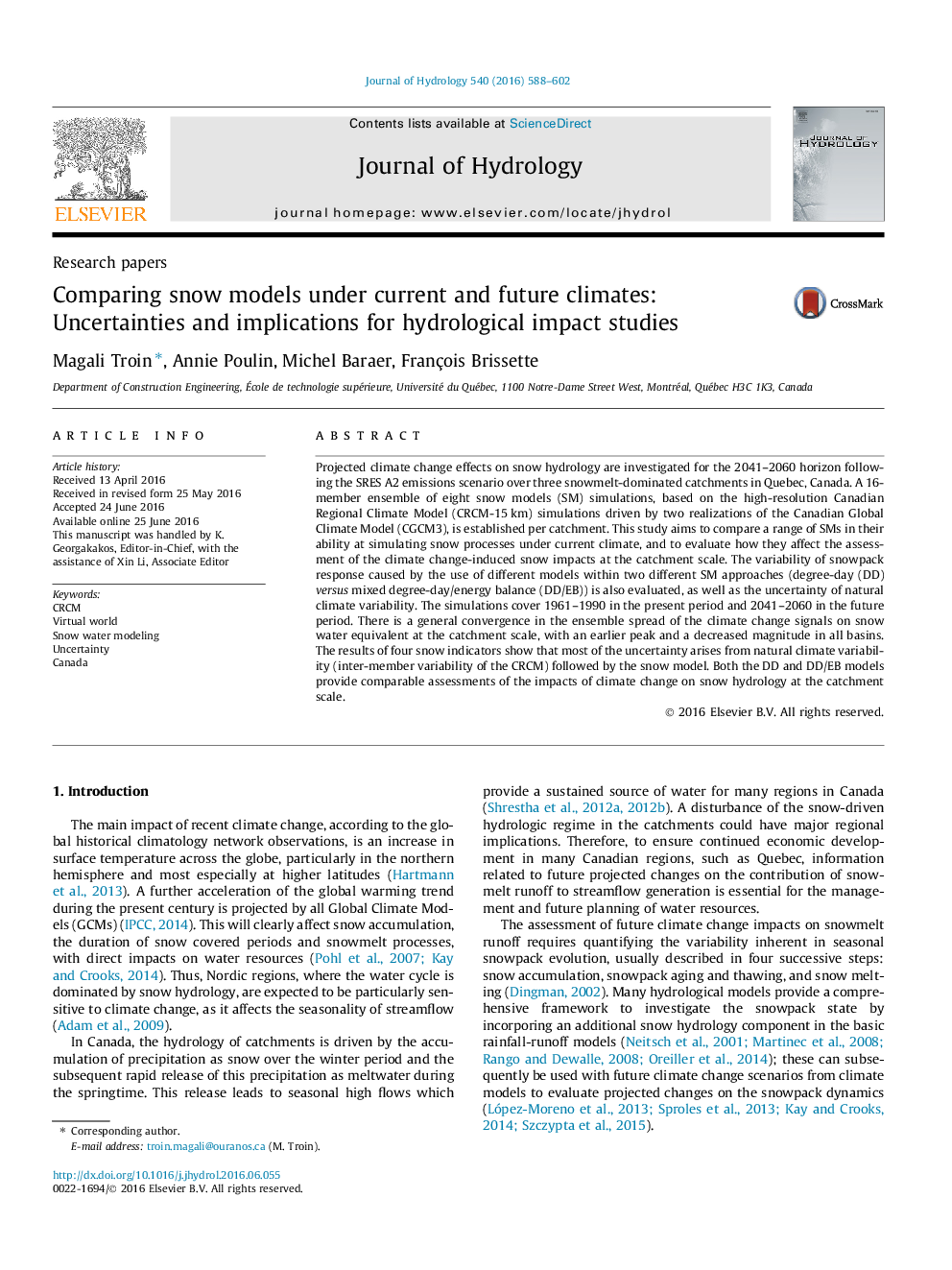| Article ID | Journal | Published Year | Pages | File Type |
|---|---|---|---|---|
| 6409557 | Journal of Hydrology | 2016 | 15 Pages |
â¢The DD and DD/EB models are compared in the virtual world based on the RCM.â¢An ensemble of RCM-SM simulations is used over three Canadian catchments.â¢Uncertainty of natural variability and snow models on SWE projections are explored.â¢The DD and DD/EB models provide comparable assessments of climate change on SWE.
Projected climate change effects on snow hydrology are investigated for the 2041-2060 horizon following the SRES A2 emissions scenario over three snowmelt-dominated catchments in Quebec, Canada. A 16-member ensemble of eight snow models (SM) simulations, based on the high-resolution Canadian Regional Climate Model (CRCM-15Â km) simulations driven by two realizations of the Canadian Global Climate Model (CGCM3), is established per catchment. This study aims to compare a range of SMs in their ability at simulating snow processes under current climate, and to evaluate how they affect the assessment of the climate change-induced snow impacts at the catchment scale. The variability of snowpack response caused by the use of different models within two different SM approaches (degree-day (DD) versus mixed degree-day/energy balance (DD/EB)) is also evaluated, as well as the uncertainty of natural climate variability. The simulations cover 1961-1990 in the present period and 2041-2060 in the future period. There is a general convergence in the ensemble spread of the climate change signals on snow water equivalent at the catchment scale, with an earlier peak and a decreased magnitude in all basins. The results of four snow indicators show that most of the uncertainty arises from natural climate variability (inter-member variability of the CRCM) followed by the snow model. Both the DD and DD/EB models provide comparable assessments of the impacts of climate change on snow hydrology at the catchment scale.
